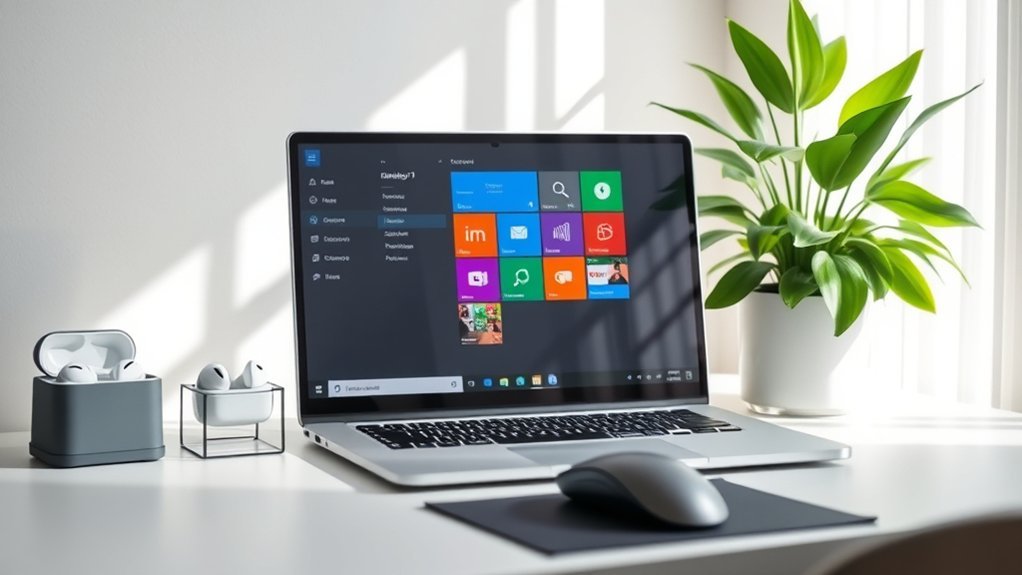Uninstalling apps on Windows 11 is straightforward and can really help optimize your system. You’ll start by accessing the Settings menu, where you’ll find all the tools you need. Next, traversing to your installed apps is a breeze. But what comes after that? The uninstallation process is key to freeing up space and improving performance. Let’s break it down step by step.
Accessing the Settings Menu
To uninstall apps on Windows 11, you’ll first need to access the Settings menu. Click on the Start button or press the Windows key on your keyboard. You’ll see a list of options; look for the gear icon, which represents Settings. Click it to open the menu.
Once you’re in Settings, you’ll find various categories to choose from. Take a moment to explore this space, as it’s your gateway to managing your system effectively. By familiarizing yourself with the layout, you’ll gain more control over your device.
Navigating to Installed Apps
Once you’re in the Settings menu, locating your installed apps is a straightforward process. Start by clicking on the “Apps” section on the left sidebar. This will open up a new window where you’ll find all your applications listed. You can easily scroll through or use the search bar to find specific apps.
Navigating to your installed apps in the Settings menu is simple—just click on “Apps” in the sidebar.
Here are some tips to enhance your navigation:
- Sort by name or date: Use the sorting options to arrange the apps in a way that makes sense to you.
- Check app size: This helps identify larger apps that may take up unnecessary space.
- Explore app options: Click on an app to reveal additional details and settings.
With these steps, you’re well on your way to managing your installed apps effectively!
Completing the Uninstallation Process
After selecting the app you want to uninstall, you’ll see an option to remove it from your system. Click on the “Uninstall” button, and a confirmation prompt will pop up. This is your chance to double-check if you’re ready to let go of the app.
If you’re sure, hit “Yes” to proceed.
Windows 11 will then initiate the uninstallation process. Depending on the app, this might take a few moments. Once completed, you’ll receive a notification confirming the removal.
To guarantee your system feels lighter, consider restarting your device. This step clears residual files.
With these simple actions, you’ve successfully liberated your computer from unnecessary clutter, paving the way for a more streamlined experience. Enjoy your newfound space!
Frequently Asked Questions
Can I Uninstall Built-In Windows 11 Apps?
Yes, you can uninstall some built-in Windows 11 apps. Just go to Settings, click on Apps, select the app you want to remove, and choose Uninstall. You’ll regain control over your system’s applications.
How Do I Reinstall Uninstalled Apps?
Like a phoenix rising, you can reinstall uninstalled apps through the Microsoft Store. Open the Store, search for your desired app, and hit “Install.” You’ll soon welcome back your digital companions with open arms.
Will Uninstalling Apps Free up Disk Space?
Yes, uninstalling apps will free up disk space. You’ll notice a difference as you remove unnecessary programs, allowing your system to run smoother and giving you more room for what truly matters. Enjoy the liberation!
Can I Use Third-Party Software to Uninstall Apps?
Sure, you can use third-party software to uninstall apps. Just picture your computer as a cluttered room; these tools are like your cleaning crew, helping you toss out the junk and reclaim valuable space.
What if an App Won’t Uninstall?
If an app won’t uninstall, try restarting your device, then attempt again. You can also check for updates or use the built-in troubleshooter. Sometimes, a third-party tool can help you remove stubborn applications.
Conclusion
Now that you know how to uninstall apps on Windows 11 in three simple steps, you can keep your device clutter-free and running smoothly. Did you know that over 70% of users often struggle with unwanted applications? By regularly cleaning up your installed apps, you can enhance your computer’s performance and make it easier to find the software you truly need. So, take a moment to tidy up your system and enjoy a more efficient Windows experience!

